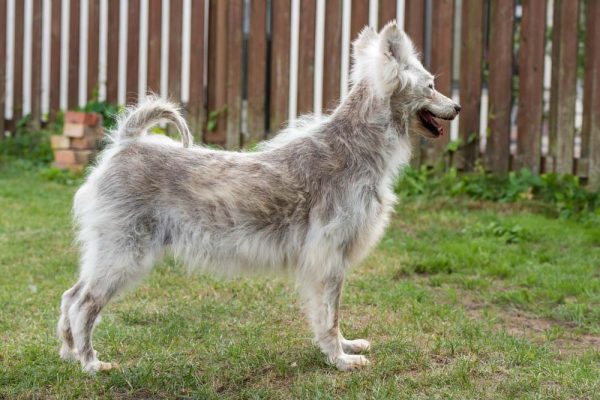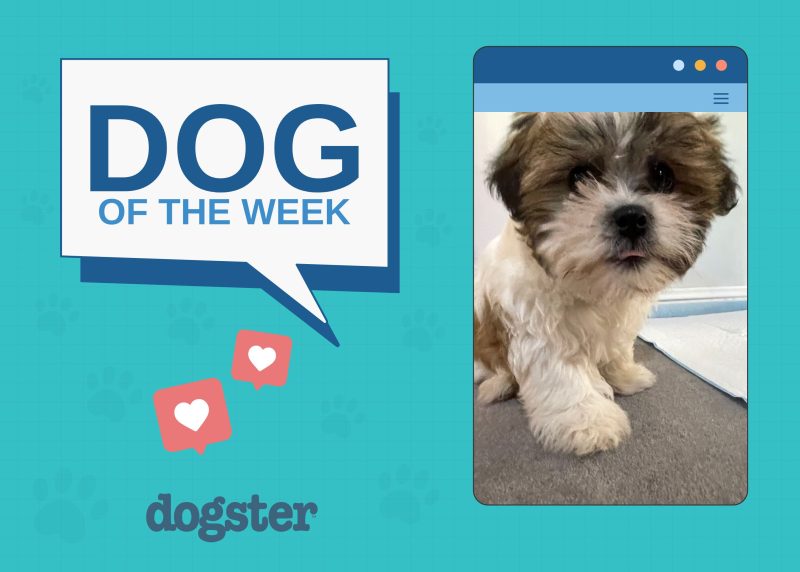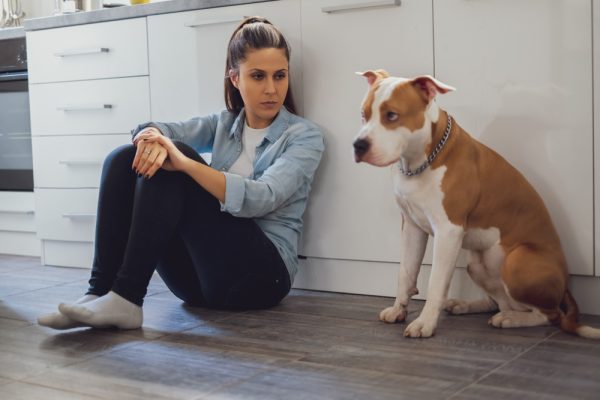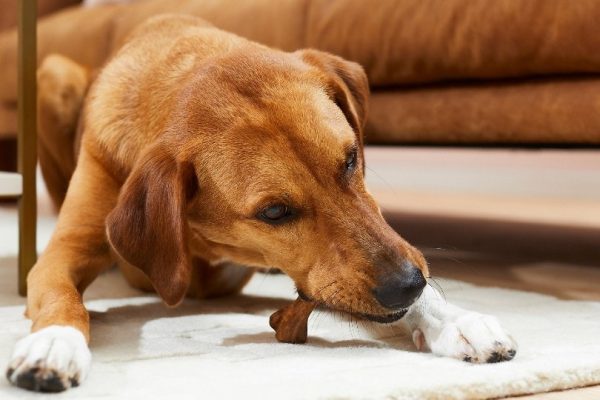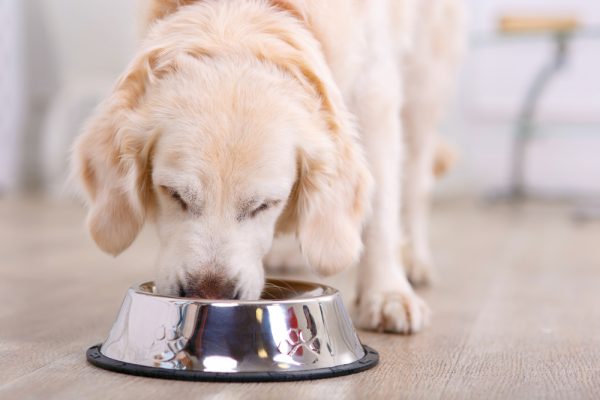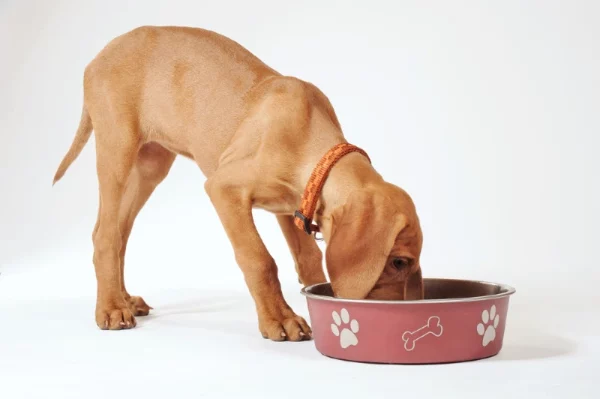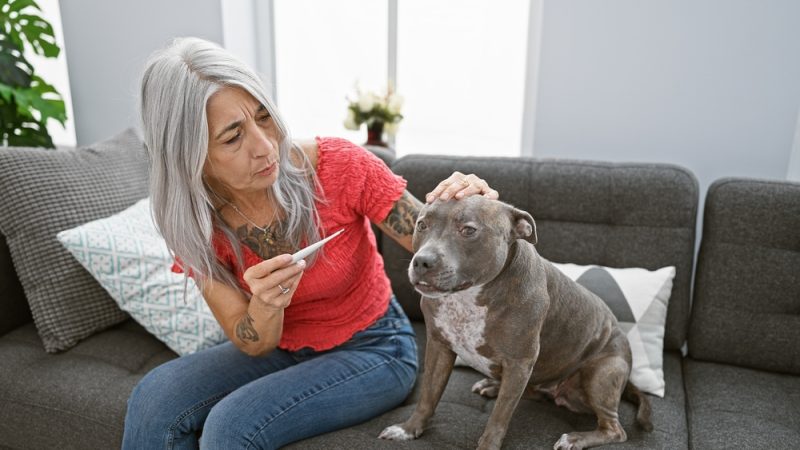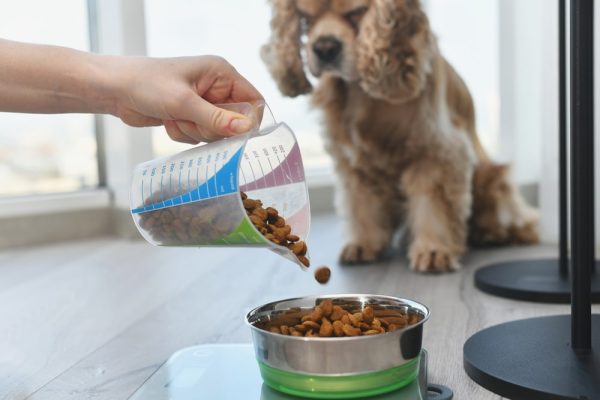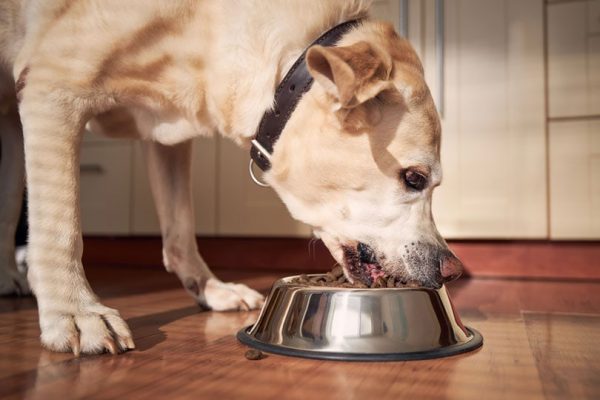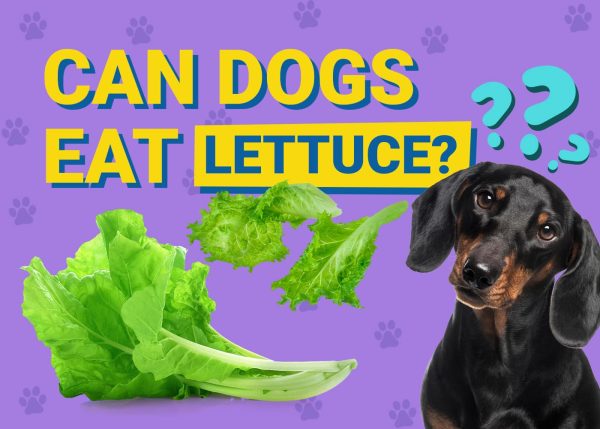In this article
View 5 More +You’re likely reading this because your dog has swallowed a bully stick and you need to know what to do next. A bully stick is a dog chew usually made from the penis of a bull. They are long thin chewy stick treats for dogs. They are designed to be chewed over a long period, but due to the fact they are so palatable, some dogs get over-excited and swallow them whole or swallow large sections of the chew.
Whether your dog has swallowed a whole chew or just a larger piece of one, the main risk is choking and gastrointestinal tract blockages or perforation. If you are concerned that your dog may have ingested a large piece of a bully stick, or swallowed it whole, you need to contact your vet immediately.

What Are Bully Sticks?
A bully stick is a long thin chewy product usually made from a dehydrated bull penis. It is a popular choice for a chew for a few reasons:
- It only contains one ingredient
- It is high in protein
- It is low in fat
- It supposedly helps with the maintenance of healthy teeth
- It keeps dogs occupied and can prevent them from chewing things they shouldn’t
The size of the sticks varies, and bully sticks are suitable for dogs of any breed and size. They are a relatively hard chew treat, so usually dogs will gnaw at them and break small pieces off over a long period of time.
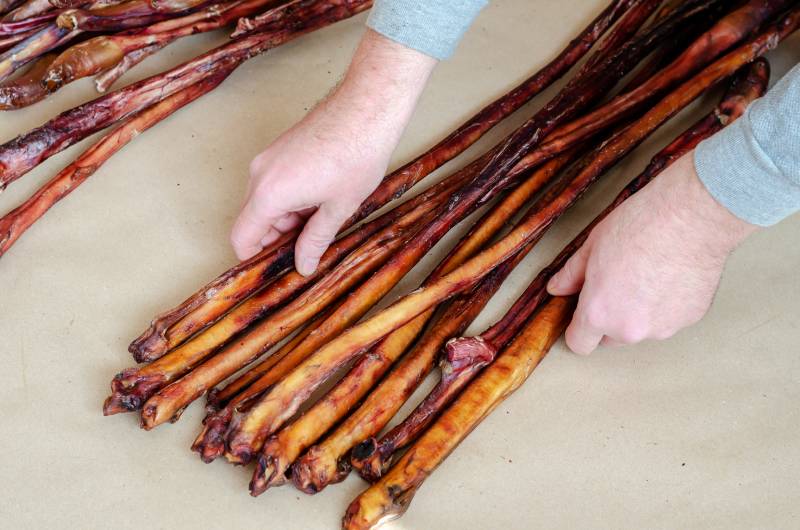
Why Bully Sticks Can Be Dangerous for Dogs
Larger dogs, dogs with very strong jaws, and avid chewers, may be able to bite off larger sections or swallow whole chews. The chews are not particularly sharp, however, if they have had parts bitten off this may leave pointy bits that could cause internal damage.
Some bits that are swallowed may be pushed through the lining of the gastrointestinal tract and perforate the guts. This is a medical emergency, and your dog will require immediate veterinary assistance.
If you need to speak with a vet but can't get to one, head over to PangoVet. It's our online service where you can talk to a vet online and get the advice you need for your pet — all at an affordable price!
If left untreated, your dog may develop septic peritonitis which is a serious condition that can result in death. The chew may not even make it past the throat as it may become lodged in this area as the dog tries to swallow. Sometimes it can be difficult to locate if it is further back and out of view.
The bully sticks are designed to be swallowed by your dog. If they eat small parts over a long period of time, this should not cause a problem unless they ate a large amount of the chews. For example, if they stole a whole packet and ate them all in one sitting. There is nothing poisonous or toxic in the chews. The issue is the shape of the whole chew or a larger section of one which can potentially be a choking hazard, cause a blockage in the intestines, or even perforate them.
Some dogs will manage to eat a whole bully stick and have no symptoms at all. The body will start to digest the stick as soon as the dog starts chewing it, so even if a really large piece is ingested, the body may still be capable of digesting it properly before it causes any issues.

My Dog Has Eaten a Bully Stick, What Do I Do Now?
Follow these simple steps if your dog has eaten a bully stick.
1. Remove any of the remaining bully stick out of their reach and ensure they don’t have access to any more.
Stay with your dog to monitor them for any immediate signs of choking or distress.
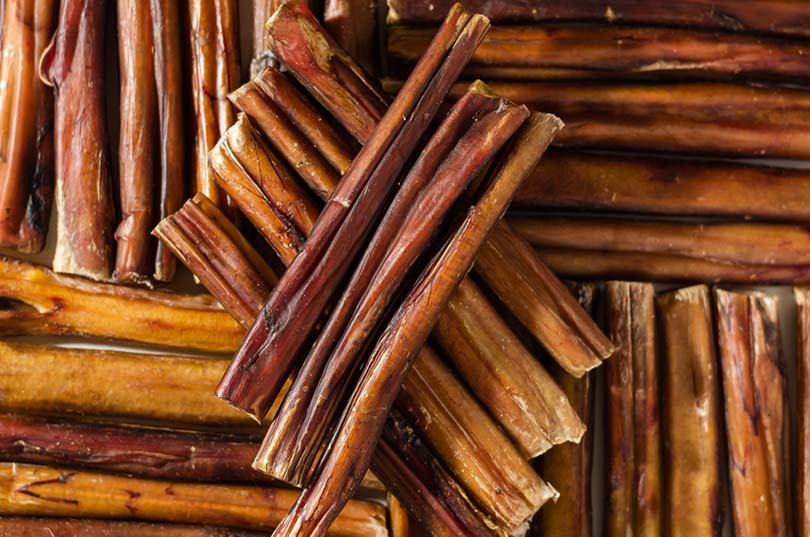
2. Contact your vet straight away.
Make sure you stay with your dog or have another adult supervise them and ring your vet immediately. Your vet will need to ask some questions to obtain a full clinical history and decide on what action needs to be taken next.
- Did your dog eat the whole bully stick or parts of it?
- Have they eaten this type of treat before?
- How long ago did the incident occur?
- What size is your dog?
- What breed is your dog?
- How much does your dog weigh?
- Does your dog have any current health issues?
- Is your dog showing any signs of distress, discomfort, or illness currently?
3. Do everything your vet tells you.
Follow your vet’s instructions as your vet is likely to tell you to bring your dog down to be seen.
4. Don’t attempt to fix your dog at home.
If you think your dog may have something stuck in their throat, trying to retrieve it yourself is dangerous. That is unless it is very obvious, and you have easy access to it without further injuring your dog or getting injured yourself. You may end up pushing it further down into the stomach or doing damage to surrounding tissues trying to pull out. Not to mention if your dog is in pain or stressed, they may bite you.
Attempting to make your dog vomit at home is advised against too. If there are sharp or pointy sections of the stick, this could potentially cause damage on the way back out or cause it to become lodged somewhere.
5. Don’t let your dog out of your sight.
It is very important to monitor your dog for any signs of choking, abdominal pain, or general distress. It is also important to monitor them to ensure they don’t run off or try to escape as this would prevent or delay them receiving the treatment they need.

Clinical Signs Your Dog Has Eaten a Bully Stick
It is important to remember that some dogs will be absolutely fine after eating a bully stick as mentioned above. They will be able to digest the stick and break it down before it causes any medical issues.
If there is a problem, some of the clinical signs may include:
- Coughing/retching: If there is a part of the chew lodged in your dog’s throat that they can’t remove themselves, they may cough and retch repeatedly
- Reduced appetite: Your dog may not feel like eating if they have pain associated with their gastrointestinal tract or if they have a temperature due to infection.
- Lethargy: Your dog may be reluctant to move around and be less interactive if they are feeling unwell.
- Vomiting: Your dog may vomit if they are choking or they may vomit if there is an obstruction or infection. They may also vomit if they are in pain.
- Adopt the praying position: Your dog may stand with the front half of their body down on the floor and their back half in the air, this is usually a sign of abdominal discomfort or pain.
- Constipation or diarrhea: Depending on whether there is inflammation, irritation, or a blockage, this can affect the consistency and movement of the feces in the bowels.
- Changes in temperament: Your dog may suddenly snap at you if they are in pain or frightened.

How to Treat a Dog That Has Eaten a Bully Stick
Depending on the size of your dog and the size of the stick, the first option may be to monitor the dog. This is because the stick is made of protein that the body is capable of digesting, so often the dog will be able to break it down despite it being whole or in a large piece.
If it appears as if the stick is causing problems, your vet will make a treatment plan. Your vet may decide to use a piece of equipment called an endoscope. This is a small camera on a probe that is inserted down the throat to allow the vet to visualize the inside of the gastrointestinal tract. It may be used to locate the stick, and then another probe with a grabbing tool connected can be inserted to retrieve the stick safely.
Your vet may have to perform surgery to remove the stick from your dog if it is further down the gastrointestinal tract or if there has been any damage such as perforation.
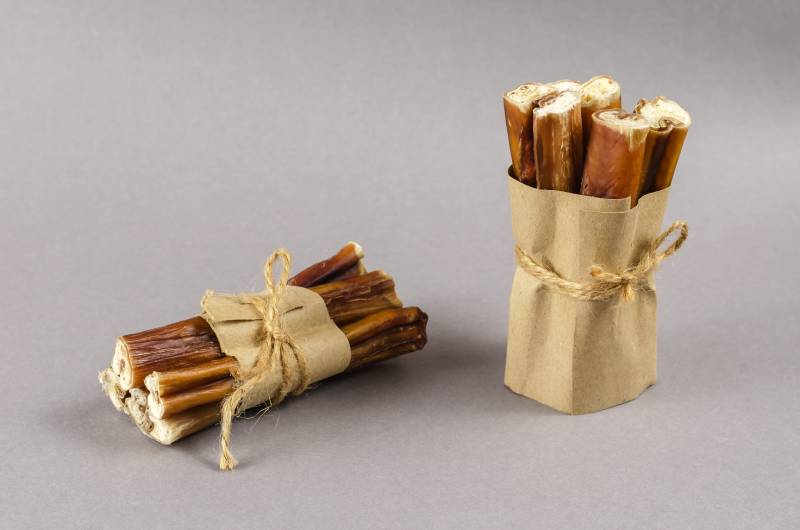
How to Prevent Your Dog from Eating a Bully Stick
If you are worried about your dog eating a whole bully stick, there are a few things you can do to prevent any harm from coming to them.
- Break up the stick into smaller pieces that the dog can chew on, but that are smaller and more manageable if swallowed whole.
- Change treats—there are plenty of other chewable treats on the market for dogs currently that are different shapes so potentially would be safer.
- Supervise your dog if you want to give them bully sticks
- Ensure they always have access to fresh water when chewing the sticks.

In Conclusion
Bully sticks are a popular chew treat for dogs. They are extremely palatable to dogs and often when given one, dogs will become very excited and try to eat the chew whole or swallow large pieces without chewing properly.
Due to their shape and size, bully sticks have the potential to cause problems including choking, gastrointestinal blockage, or perforation. Care must be taken when giving these treats to your dog.
Featured Image Credit: Dmitriev Mikhail, Shutterstock


